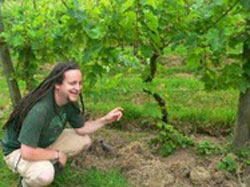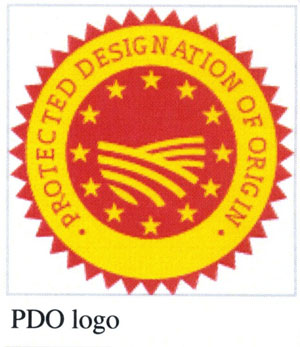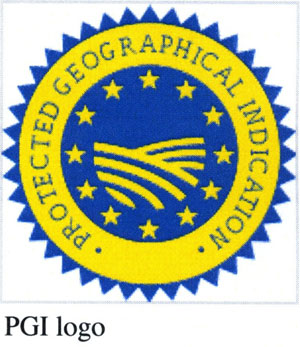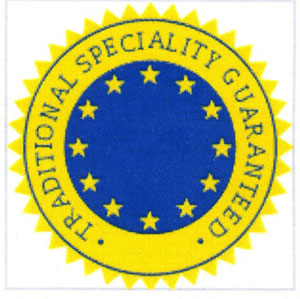Making Ireland's Unique Foods Stand Out in the Marketplace
 The whole of Europe, it seems, is going out of its way to designate its traditional and geographically specific foods as PGI, PDO or TSG. Ireland however, lags chronically behind the rest of the EU in adding this valuable marker to foods and drinks. Oliver Moore investigates.
The whole of Europe, it seems, is going out of its way to designate its traditional and geographically specific foods as PGI, PDO or TSG. Ireland however, lags chronically behind the rest of the EU in adding this valuable marker to foods and drinks. Oliver Moore investigates.
Labels labels everywhere, but what do they actually mean? Lovers of specialty European foods may be familiar with PGI or PDO labels, especially those that come from southern Europe. Spain, Portugal, Italy, Greece and France are the countries with about ¾ of these markers, over 1,000 of which now festoon products.
Some of Europe's most emblematic cheeses, like Dutch Gouda and Edam, British Blue and White Stilton, as well as Greek Feta, are adorned with such appendages.
 PGI (Protected Geographical Indication) is for products that are linked to a geographical area where at least one production step has taken place in that particular area.
PGI (Protected Geographical Indication) is for products that are linked to a geographical area where at least one production step has taken place in that particular area.
PDO (Protected Designation of Origin) is used for products that are supposed to be are produced, processed and prepared in a given geographical area, using specific, traditional techniques. Traditional Specialities Guaranteed (TSG) scheme is for traditional composition and techniques of production.
What is called the DOOR database lists all the products that have achieved this grade. 6 UK foods have been listed since 2009. Traditionally Farmed Gloucestershire Old Spots Pork actually has one of the few TSGs in the EU. The rest: Traditional Cumberland Sausage, Cornish Sardines, Traditional Grimsby Smoked Fish, Melton Mowbray Pork Pie, have all recently achieved a PGI, apart from Yorkshire Forced Rhubarb which has a PDO.
What's more interesting again is the number of applications the UK are making: 11 products are either at the application or publication stage, including Armagh Bramley Apples and Lough Neagh Eels. Ireland has no products listed as either applied or published.
While PGI and PDO products have the Lion's share: 505 for PDO and 465 for PGI; TSG is not as widely used, with just 25 thus far.
As a nation that exports over 80% of all food it produces, Ireland strangely sits at the very bottom of this particular league table. Ireland has just four registered products: one PDO - Imokilly Regato Cheese and three PGIs - Clare Island Salmon, Timoleague Brown Pudding and Connemara Hill Lamb. The first three of these were achieved around the turn of the Century, whereas the Connemara Hill lamb designation was achieved in 2007.
 There 98 farmers in the Connemara Hill Lamb group, supplying 2-3,000 lambs per year. I spoke to Director Martin Kinneavy of Cornamona, about the lamb's PGI status. I asked him if it was difficult to achieve: “It takes 5 to 7 years to get it, there is a a lot of correspondence over and back with the Department and the EU. It might just be over one point at a time, but there is a lot of to and fro like that”.
There 98 farmers in the Connemara Hill Lamb group, supplying 2-3,000 lambs per year. I spoke to Director Martin Kinneavy of Cornamona, about the lamb's PGI status. I asked him if it was difficult to achieve: “It takes 5 to 7 years to get it, there is a a lot of correspondence over and back with the Department and the EU. It might just be over one point at a time, but there is a lot of to and fro like that”.
He continues: “It also involved a lot of research on the history of the hill sheep here in Connemara. We had to prove they were indigenous to the area. We also had to research their diet, the grasses and heather. You basically have to prove that the black face horned ewe is indigenous to the region. We could get documentation from the 1700's that showed the sheep was here.”
I also asked about the use they put the status to: “The status gives the lamb a definite distinction. Its used on all our marketing material, in fact it they have to go together. We sell mostly in Ireland, Matt Joyce's butchers in Galway recently started taking it, restaurants in Dublin also take it, and hopefully we'll be starting to supply the UK soon”. He pointed out that there are some restaurants in the UK interested in the lamb, the main issue will be supply and distribution for individual restaurants abroad.
He did concede that the designation is more familiar to foreign than Irish markets, but hoped that this would eventually be a positive with exports in mind.
According to the application for registration submitted on Connemara Hill Lamb, or ‘Uain Sléibhe Chonamara’, the product is “bred, born and reared in the designated geographical region. The lambs are light in body- weight and bone and the carcass is lean with a light cover, rose red in colour and has a solid deep texture.”
The application also includes other information on geography, origin, method of production and what are called “links”, which is primarily about flora grazed. The geographical section describes location, terrain and grazing. Origin refers to the history of Blackface sheep in the region, including importation of some quantities from Scotland in the post-famine period, and the subsequent development of “a distinctive strain and has adapted to survive the rugged conditions of Connemara. The black face breed is particularly suited to the terrain of the area given its ability to forage better than other breeds.” These is also traceability information regarding ear tags.
The Method of Production section has information on the late lambing time (April), outdoor grazing, slaughter age, shop availability (August to November) and the proximity to Connemara of the abattoir used. The link section states “the taste, flavour and colour of Connemara Hill lamb are directly linked to the local flora on which the lambs are grazed. The diet is mountain grass heather and herbs, common to the areas of production”.
These are then listed with their Latin names.
The grazing style of the lighter, hardy animals on the specific terrain of Connemara is also described.
The market for these products in Europe is worth over E14 Billion: the exact figure is uncertain as it is currently being analysed again, having previously been analysed in 2007 when there were just 800 of these products.
Whatever the exact value, in many parts of Europe, consumers look out for these markers as a quality sign. Indeed the EU has recently set aside E37 million to help promote quality markers across 13 countries. According to the European Commission “the selected programmes cover wine, PDOs, PGIs and TSGs, organic food and farming, fruit and vegetables, horticulture, milk and milk products, olive oil and table olives, eggs, seed oil and meat.”
Perhaps unsuprisingly, Ireland is not one of the countries to get some of this E37 million promotional fund. It is noteworthy that all of the other sectors listed in the paragraph above, many of which are produced in Ireland, have lost out because Ireland is not included.
France is receiving almost €700,000 yearly to promote organic farming and food from this fund, along with €1.5 million yearly for promoting products from their outermost regions, and €180,000 yearly for promoting their PDO and PGI wines, the latter for specific promotional campaigns in Ireland and Britain.
At the time of the Connemara Hill Lamb's achievement of the PGI status, The then Minister for Agriculture and Food, Mary Coughlan T.D. issued warm congratulations. Minister Coughlan said "I am particularly delighted to announce the registration of this unique product, unique to the far-famed Connemara Region. In protecting the traditional origins of our regional foodstuffs, we strengthen our regional identities and reinforce the link that Irish people have long held with the land".
 The success of the Connemara Hill Lamb Group, the Minister hoped, “would encourage other groups to register their geographical specialities.” None however have.
The success of the Connemara Hill Lamb Group, the Minister hoped, “would encourage other groups to register their geographical specialities.” None however have.
I asked the Department about this. They pointed out that our own quality markers are working well, and that “the EU PDO/PGI regime is based on a group, regional or geographic principles. In general in Ireland production of specialty products, for example farmhouse cheeses, has been undertaken by individual local enterprises or individual producers, rather than groups. Producers may have found it difficult to see evidence that a PDO/PGI approach would ensure premium pricing of their products.”
A failed attempt was made recently to get all Irish Beef categorised as PGI. The Department's reasoning on this points to the fact that “Regulation 510/2006 only permits the name of a country to be used “in exceptional cases” (Article 2. 1 (b) which makes it difficult to register a PGI application as for example ‘Ireland’ or ‘Irish’.
The Department discussed grounds for an exception at an early stage with Commission services and reputation emerged as a good point and one which was acknowledged even when reservations were expressed on the proposal that all beef produced in Ireland would be eligible for the designation ‘Irish Beef PGI’.
“Following consideration of the application the Commission services raised a number of points in regard to the fact that the application was not in their view sufficiently restrictive in relation to characteristics, for example specification as regards feeding and the average grazing period should be more specific e.g. grazed on limestone pastures for a minimum period, fed according to a certain regime at other times, parameters for colour of meat and fat, and ensuring that the PGI would be confined to product that did not meet such detailed specifications.”
Interestingly, Welsh and Scottish beef and lamb (four separate product categories in total) have achieved PGI status. Media reports indicated that the number of breeds, variations of production styles and inclusion of dairy herd meat in Irish beef were also implicated in Ireland's failure to achieve PGI status.
Acknowledging perhaps a 'must try harder' approach, the Department when queried did themselves point out that “Food Harvest 2020 recommended that Bord Bia and industry should make the optimal use of Ireland’s protected Geographical Indications, and identify further designations”.
They continue: “This requires increasing awareness and interest and making it easier to identify opportunities and success factors. The Department is working with Bord Bia on ways of doing this, has met with interested groups of producers and is taking on board the views of the Taste Council which sees potential in the area. An Information Note on the PDO/PGI regime setting out the process for registration in a clearer way has been drafted.”
So will we see more applications being made for PDO and PGI foods from Ireland over the next few years? Or do the powers that be in the agri-food lobby fear that designations for some demotes the image of all others? Whatever the case, with such an export-orientated agri-food sector, and an economy in tatters, a few more designations would seem to eminently sensible move.
--------------------
This article first appeared in The Irish Examiner, where Dr. Oliver Moore writes a weekly column on organic farming and food each Thursday. Find more of his work on olivermoore.blogspot.com or @oliver_moore. His research specialisations are in organics, alternative agri-food systems, and rural sociology. His is also a board member of the Cloughjordan Community farm.





There are currently no comments
Leave a comment
Not a member? Register for your free membership now!
Or leave a comment by logging in with: